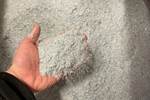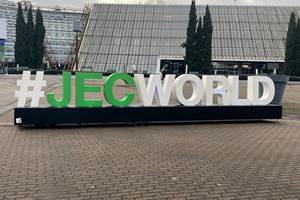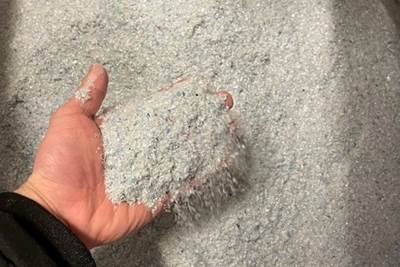AOC rPET resins enable Quantum Mouldings composite pop-top camper van roofs
Feedstock-based resin formulations and high-quality Büfa gelcoats support flexible, durable and more sustainable automotive part processing.
Source | Quantum Mouldings
AOC (Schaffhausen, Switzerland) and composites company Büfa (Rastede, Germany) worked together to develop and manufacture high-quality pop-top roofs for camper vans with (Kidderminster, U.K.) using AOC’s novel rPET-based Synolite 4600-G-1 resins and Büfa’s Neogel 3000 series gelcoats. Besides offering mechanical strength and great part aesthetics, the use of rPET-based formulations reduced the project’s environmental footprint.
Quantum Mouldings is a well-established manufacturer of composite components used in automotive and transportation, industrial, marine and leisure applications. The company, which uses a variety of composite processes — including resin transfer molding (RTM), hand layup and spray layup — specializes in medium-volume production of high-accuracy and dimensionally consistent parts, typically 1,500-5,000 parts per year.
One of its products is a “pop-top” elevating roof, used in the retrofit market for converting conventional vans of different brands into camper vans. According to the company, final parts need to combine a premium color and surface finish with high mechanical integrity and durability.
“During hot summers, the parts can heat up to temperatures above 80°C in service, particularly when they are in dark colors,” explains Mark Young, managing director of Quantum Mouldings. “Therefore, it is very important the parts do not deform and remain in shape when exposed to heat.” The gelcoat finish must also be color fast and resistant to ultraviolet (UV) aging to ensure that the pop top looks good for many years.
To achieve the demanding application, a 600-gram injection mat — materials created by injecting a liquid resin onto a fiber preform in RTM — was combined with Synolite 4600-G-1, a formulation used in RTM and vacuum infusion, as well as the Neogel 3000 series gelcoats. AOC’s resin is reported to feature low shrinkage, resulting in low warpage and good dimensional predictability during processing.
“We have seen that the Synolite 4600-G-1 also has a lower exotherm compared to the products we were using in the past. This translates to less stress on the molds and a longer tool life compared to using other resins,” adds Mark Young. “Compared to DCPD [dicyclopentadiene] resins, the parts can also be demolded more easily and faster, with less risk of sticking. The flexibility to cure the resin with different peroxide types and concentrations allows us to use this one product in a number of different parts with different size and complexity.”
The Synolite 4600 series products are based on recycled PET, coming mostly from post-consumer waste. For each single ton of product, approximately 4,000 scrapped PET bottles are consumed, ensuring the efficient reuse of a valuable raw material. The Synolite 4600 series products have also been certified by Lloyd’s.
“We are seeing big interest from our customers for applying these rPET-based formulations for their composite parts,” comments Fons Harbers, vice president marketing and sales for AOC EMEA. “While it takes more effort and additional process steps in manufacturing rPET-based products, we believe it is worth it and helps in reducing the carbon footprint of our customers’ products.”
According to Büfa Composites UK’s general manager, Eddie Putwain: “We enjoy working as one team with Quantum Mouldings and AOC, making parts with a good balance of performance and quality at a competitive system cost.”
Related Content
JEC World 2024 highlights: Glass fiber recycling, biocomposites and more
CW technical editor Hannah Mason discusses trends seen at this year’s JEC World trade show, including sustainability-focused technologies and commitments, the Paris Olympics amongst other topics.
Read MoreMcLaren develops aerospace-inspired ART method for volume composite super car engineering
Automated rapid tape (ART) technique, already deployed at the MCTC and to be used for future McLaren models, is capable of producing lighter, stiffer and stronger carbon fiber structures with less waste.
Read MoreHonda begins production of 2025 CR-V e:FCEV with Type 4 hydrogen tanks in U.S.
Model includes new technologies produced at Performance Manufacturing Center (PMC) in Marysville, Ohio, which is part of Honda hydrogen business strategy that includes Class 8 trucks.
Read MoreCarbon fiber, bionic design achieve peak performance in race-ready production vehicle
Porsche worked with Action Composites to design and manufacture an innovative carbon fiber safety cage option to lightweight one of its series race vehicles, built in a one-shot compression molding process.
Read MoreRead Next
AOC Atlac 430E resin formulation reduces Versteden styrene emissions
Developed for composite piping systems development, the novel system has proven low levels of styrene concentration during hand lamination and filament winding processes.
Read MoreOptiplan automotive sandwich panels optimized via AOC rPET resin series
Incorporation of AOC’s Synolite rPET resins into FRP cover sheets enables the development of more eco-friendly truck construction.
Read MoreAOC and partners achieve styrene-free composite RV roof
Indupol, Büfa and AOC brought their materials and fabrication know-how to yield a styrene-free gelcoat and RTM formulation for the manufacture of luxury vehicle roofs.
Read More












